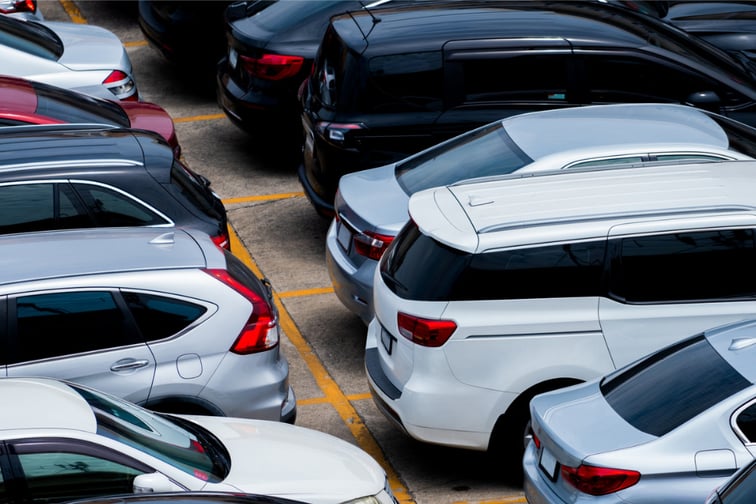

Vehicles of varying levels of automation have been working their way on to American roads. Twenty-nine (29) states so far have passed legislation on ‘self-driving’ cars.
Developments around the vehicles have led garage specialist Sandy Zrimsek, VP transportation underwriting at Colony Specialty, to warn of a “claims nightmare”, a regulation gulf, and a public awareness gap.
According to Zrimsek: “Without [further] guidance from regulators, it’s not clear what the path forward will look like, and uncertainty is bad for the insurance industry. We don’t know how to change our rates or coverages to meet the needs of what is coming in.”
Manufacturers and regulators should be working to make sure road users and those behind the wheel of autonomous vehicles have “some kind of education” on how the vehicles and liability works, according to Zrimsek, particularly while a gap exists between fully self-driving vehicles and those that need user intervention such as advanced driver-assistance system (ADAS) vehicles.
Level two vehicles provide continuous assistance with acceleration, braking and steering – but the driver must remain “fully engaged and attentive”. This is the top level of autonomy currently available to the motoring general public.
As vehicles stray into level three territory, where they can actively perform driving tasks while the driver remains free to take over, the driver “must be available” to resume all aspects of driving.
Into level four, or “high automation”, the system handles driving in limited-service areas in which a human driver is not required to operate it.
It is only when a vehicle reaches level five, or full automation, that a human driver is not needed to operate the vehicle at all.
As the vehicles become more hi-tech and move up the autonomy scale, there is greater scope for public confusion – and while level two is the highest level a typical consumer might expect to get behind the wheel of, in the commercial world things have moved at a different pace.
In shipping and e-commerce, autonomous heavy trucks and truck tractors have been mooted as a solution to driver shortages and to cut down costs. The market for autonomous trucks is predicted to grow from $460 million in 2024 to $1.55 billion by 2030, according to research from Markets and Markets, and these are already on the road in pilots in some states.
Garage specialist Zrimsek predicted that more automated vehicles will soon begin hitting outside, or non-manufacturer, repair shops.
Within “as soon as the next few years”, the vehicles could also be reaching traditional used car dealers, Zrimsek said.
This, Zrimsek said, poses a potential problem. The Colony Specialty VP said that the carrier has spoken with local auto repair shops that do not yet have access to training for automated vehicle systems.
“[Repairers] need to make sure that they have the proper training to be able to fix, replace, and repair these systems – otherwise, they could be voiding warranties or causing more losses,” said Zrimsek.
It is not a case of repairers being unwilling to get up to speed, according to Zrimsek, but instead that training is not always available.
“It’s my understanding that these systems are expensive,” Zrimsek said. “And the cost to repair or replace is unknown.”
From an insurer perspective, it is important that OEMs are not able to cannibalize the repair market thanks to the new technology.
“We want to see a competitive repair market, we don’t want to necessarily see that being able to be captured completely by the manufacturers,” said Bob Passmore, department VP, personal lines, American Property Casualty Insurance Association.
The “complexity” of repairs has increased thanks to the more advanced technology in cars today, according to Passmore.
“It’s [no longer] a piece of glass and a piece of glass out, or a fender off and a fender on, you have to make sure that all the sensors and cameras, all the bells and whistles the vehicle has to help keep you out of crashes are still working before and after,” Passmore said.
“And that makes it a little more expensive.”
The average ticket cost has gone up 50% over the past few years, according to Automotive Service Association collision operations divisions director and LaMettry’s Collision general manager Brandon Mehdizadeh.
“We do a lot of OEM certification repairs – domestic, European, Korean, Japanese,” Mehdizadeh said.
With “everybody” now looking to put ADAS in new cars, this is leading to a “more expensive” repair process, according to Mehdizadeh. However, the ASA collisions boss was confident that at least some repairers can access relevant training materials and have begun building up skillsets.
“The ones who are familiar with some of the EV cars and the newest technology that are fixing them can get access to the information,” Mehdizadeh said. “And it’s not that difficult to access and get it.”
Mehdizadeh described the repairer landscape as a “kind of pay to play segment”, with those with network ties and communication with OEMs better able “to get information fairly quickly.”
Training and skillsets are evolving, Mehdizadeh said, as body shops grow more “technically advanced”.
“The new generations that are coming up […] tend to be more tech savvy, so it’s kind of a good situation and good switch to be part of,” Mehdizadeh said. “But shops that are starting from scratch and don’t really do the research or have the funds to pay for access and the equipment and tooling, yes there will be a challenge.”
